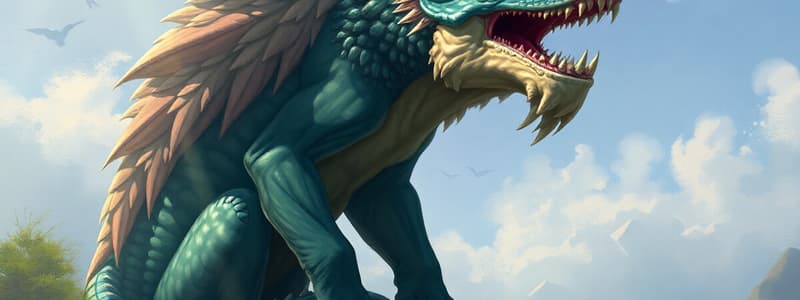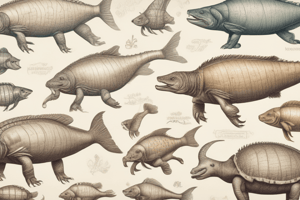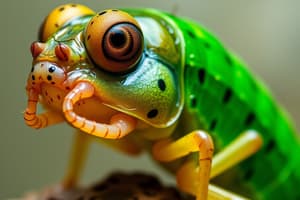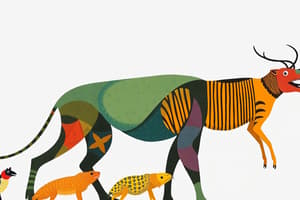Podcast
Questions and Answers
Name the 4 classifications we have learned about?
Name the 4 classifications we have learned about?
Mammals, Birds, Reptiles, Amphibians
What are cold-blooded animals also known as?
What are cold-blooded animals also known as?
Ectothermic animals
What are warm-blooded animals also known as?
What are warm-blooded animals also known as?
Endothermic animals
What are animals active during the day, night, and dusk to dawn called?
What are animals active during the day, night, and dusk to dawn called?
What are animals with backbone and no backbone called?
What are animals with backbone and no backbone called?
Name 2 benefits of having a backbone and no backbone?
Name 2 benefits of having a backbone and no backbone?
What is adaptation?
What is adaptation?
Name 3 animals and give an example for each animal on how they have adapted to climatic conditions?
Name 3 animals and give an example for each animal on how they have adapted to climatic conditions?
What is evolution?
What is evolution?
Why did animals evolve?
Why did animals evolve?
Study Notes
Animal Classifications
- Four classifications:
- Cold-blooded/Ectothermic
- Warm-blooded/Endothermic
- Diurnal (Active during the day)
- Nocturnal (Active at night)
- Crepuscular (Active during dusk and dawn)
- Vertebrates (Have a backbone)
- Invertebrates (Do not have a backbone)
Benefits of Backbones and No Backbones
- Vertebrates:
- Provide structural support
- Offer protection for the nervous system
- Invertebrates:
- Can move quickly and easily in tight spaces
- Can thrive in diverse environments
Adaptation
- Adaptation: The process by which organisms adjust to their environment's conditions over time.
Examples of Adaptations to Climatic Conditions
- Polar Bear: Thick fur and a layer of blubber provide insulation against cold arctic temperatures.
- Camel: Long eyelashes shield eyes from sandstorms, while hump stores fat for energy and water reserves.
- Desert Fox: Large ears radiate heat, allowing the fox to regulate body temperature in scorching deserts.
Evolution
- Evolution: The gradual change in characteristics of a species over generations.
Reasons for Animal Evolution
- Adapt to Changing Environments: Variations in the environment (climate, food sources, predators, etc.) lead to advantageous traits.
- Survival and Reproduction: Individuals possessing suitable adaptations are more likely to survive, reproduce, and pass their traits to offspring.
- Natural Selection: The process by which organisms with more favorable traits are more likely to survive and reproduce.
Studying That Suits You
Use AI to generate personalized quizzes and flashcards to suit your learning preferences.
Related Documents
Description
Explore the fascinating world of animal classifications, including vertebrates and invertebrates, and discover their unique adaptations to survive in different environments. This quiz covers cold-blooded and warm-blooded classifications as well as examples from nature such as polar bears and camels.




